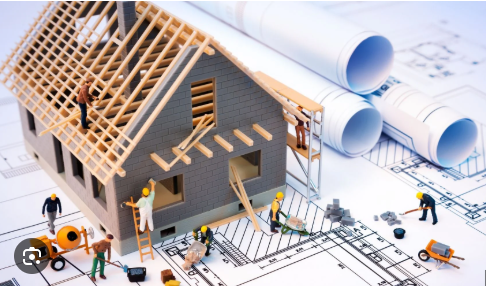Many buyers assume new homes are perfect and forgo a home inspection by a licensed and certified home inspector. However, professional inspections often reveal issues that might otherwise go unnoticed and therefore it is still highly recommended!
Some key reasons to get a new construction home inspected include, but are not limited to:
- New homes can have defects from rushed construction, subcontractor errors, or mediocre oversight
- An inspection provides leverage for requesting repairs before closing
- Most builders offer warranties, which an inspection documents the home’s initial condition as a point of reference to have any issues addressed
- Some lenders or insurance companies may require an inspection
Despite being brand new, newly constructed homes often have surprising defects. Here are the most common issues inspectors find:
Foundation and Structural Problems
Missing or improperly installed foundation components like anchor bolts can create serious structural vulnerabilities. Foundation cracks, while sometimes normal as concrete settles, can indicate serious problems if they exceed certain widths or patterns. Improper grading around the foundation is particularly common and can lead to water intrusion issues.
Roofing Defects
Missing, damaged, or improperly installed shingles are frequently discovered during inspections. Flashing problems around chimneys, vents, and other roof penetrations are common and can lead to leaks.
Electrical Issues
Missing GFCI (Ground Fault Circuit Interrupter) outlets in bathrooms, kitchens, and outdoor areas are a common safety oversight. Improperly wired outlets, switches, and fixtures are surprisingly common in new homes. Inspectors regularly find open junction boxes and missing cover plates that create shock hazards.
Plumbing Problems
Plumbing leaks and improper drainage are frequently found during new home inspections. Inspectors often discover incorrectly installed fixtures or missing components.
HVAC Deficiencies
Improperly installed HVAC systems that haven’t been correctly balanced or tested are common. Ductwork issues including disconnected, damaged, or poorly sealed ducts affect system efficiency.
Window and Door Problems
Poorly installed windows and doors often fail to operate properly, create drafts, or allow water intrusion. Missing or improperly installed flashing around windows is a frequent finding that leads to water damage.
Drainage and Grading Issues
Poor drainage away from the foundation is one of the most common problems in new construction. Improperly sloped grading can direct water toward rather than away from the home.
Insulation and Ventilation Defects
Missing or improperly installed insulation, especially in attics and crawl spaces, affects energy efficiency. Inadequate attic ventilation that can lead to moisture problems and reduced roof lifespan.
Cosmetic Issues
While not structural, cosmetic problems like paint overspray, drywall defects, and trim gaps are common complaints.
For new construction homes, getting a professional inspection helps identify these issues before closing, when you have maximum leverage to have them fixed under the builder’s warranty. Consider multiple inspections performed to ensure you have solid build:
- Pre-drywall inspection (before walls are closed up)
- Final inspection (when construction is complete)
- 11-month inspection (just before the typical 1-year builder warranty expires)
These inspections can help you catch potential problems early and ensure your home is built to last. If you’re in Smyrna, Mableton, or the surrounding areas and considering getting a new construction inspection, reach out to us today and make sure your new home is truly move-in ready.


Recent Comments